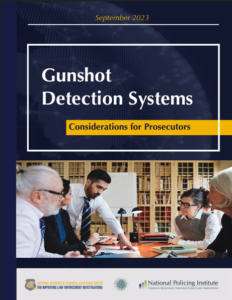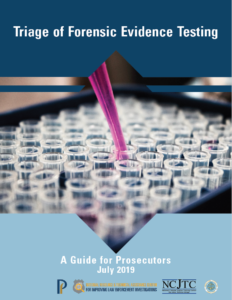Gunshot Detection Systems: Considerations for Prosecutors
Have you ever brought a shooting case to trial and witnesses did not agree on how many
shots were fired? Have you faced a defense witness who claimed at trial that the victim
shot first? Maybe you had an uncooperative victim at the hospital, but no one reported the
shooting and thus no scene could be established. In these situations, the existence of a
gunshot detection system (hereafter referred to as “GDS”) can help make your case.
GDS evidence can be crucial circumstantial evidence that helps establish where and
when a shooting occurred, confirm whether more than one shot was fired, provide
evidence about the type of gun used, and show whether there was more than one shooter.
Combined with officer and lay witness testimony, 911 call recordings, video from the
scene, cell site data, or location monitoring, GDS evidence can also link a person to a
shooting at a particular place in time. GDS evidence has been used in probable cause
affidavits that justify search and arrest warrants. As demonstrative evidence, GDS evidence
allows jurors to hear the shots that took a life or were fired toward a home or gathering.
This article provides a basic understanding of GDS technology, its investigative and
evidentiary value, and issues prosecutors may encounter when trying to admit GDS
evidence at trial.











